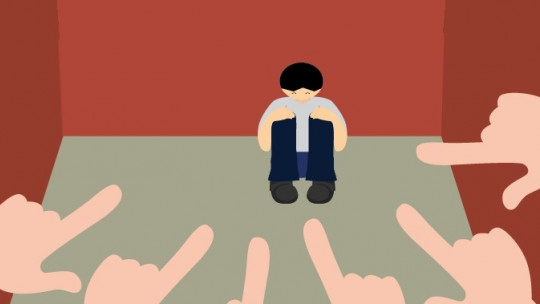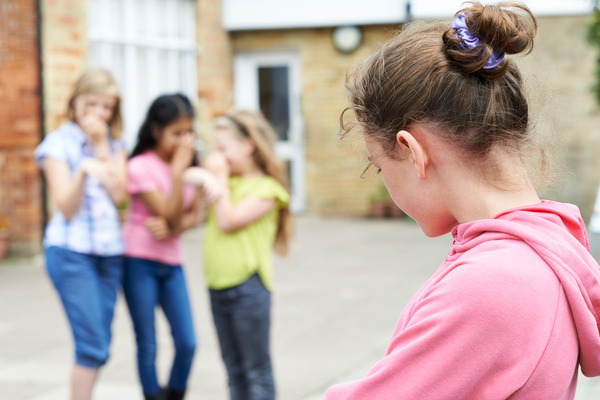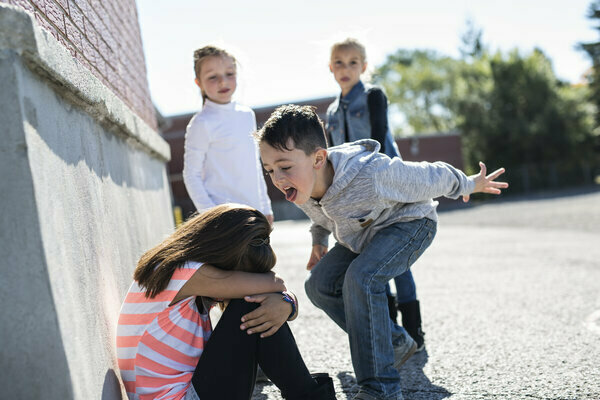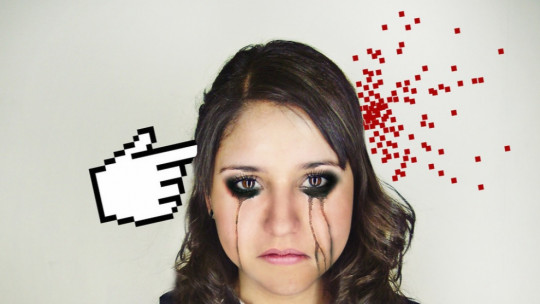Bullying is a term that has gained popularity in recent years, but This phenomenon has existed since man existed Now, what exactly do we mean by bullying? This Anglo-Saxon word is frequently used to refer to typical class bullies. That is, the abusers, whether physical or psychological.
Bullying is a phenomenon that It is characterized by harassment and/or intimidation of the abuser on the victim, within the school environment The bully enjoys feeling superior to the bullied and rejoices in the bully’s suffering. Repeated exposure to this condition by the victim can have serious psychological consequences. In some cases, students who have been victims of bullying may commit suicide.
If you want to better understand this phenomenon, keep reading; here you will find a summary of types of bullying and the characteristics of each one.
The types of bullying
Violence takes very diverse forms, and within this complexity, we can draw some lines to delimit the particularities of its main variants, so that it is easier to prevent and neutralize them as soon as possible where they occur. This also applies in the specific case of bullying, and that is why today a distinction is made between different types of bullying.

But what types of bullying exist? According to the National Center Against Bullying (NCAB) Bullying can be classified in the following way following different criteria
1. Verbal bullying
What is it?
Verbal bullying or verbal bullying is characterized by the bully expressing cruel words, insults, threats , intimidation, jokes and exclusionary statements about the victim’s appearance, sexual condition, ethnicity, race or disability. Children are more sensitive to this type of comments.
Example : When a child says to another child: “You are very, very fat, and so is your mother.”
How to detect it?
Children who are victims of this type of bullying may appear absent, moody, or show a change in appetite. They can also say something of what they have been told and ask if it is true.
2. Physical bullying
What is it?
Physical bullying is characterized by aggressive and intimidating behavior on the part of the bully , which includes kicking, hitting, tripping, blocking or pushing. It is the best known form of Bullying.
Example : A boy is bullied by another boy who pulls down his pants at recess
How to detect it?
Unfortunately, many children do not tell their parents what has happened. But parents can detect if their child is experiencing physical bullying because This type of bullying usually leaves marks on the victim’s body , which sends an alarm signal. Some of these body marks are: cuts, bruises, torn clothing, etc. Additionally, the victim may frequently complain of headaches or stomach aches.
3. Social or relational bullying
What is it?
This type of bullying is more difficult to detect and usually happens behind the victim’s back. The goal is usually for the person not to join or be part of a group Whether in the cafeteria, at recess soccer games, or any social or educational activity at the center, the victim is ignored or disowned by her classmates.
Example : A group of girls in a gym class take their photos about a party in which one of the girls in the class was not invited, and when she is present, they treat her as if she were invisible.
How to detect it?
The victim often shows mood swings, avoids peer groups, and is alone more than normal Girls are more likely to suffer this type of bullying. The emotional pain caused by social bullying can be just as intense as that suffered by physical bullying and the consequences can last even longer.
4. Cyberbullying
What is it?
Cyberbullying is a phenomenon that was born due to the rise of social networks It is characterized by harassment or intimidation produced through social networks, text messages and emails. Through the digital medium, the harasser spreads false rumors, lies, threats, sexist or racist comments, causing enormous discomfort and psychological and emotional problems in the victim.
Example : When a boy tweets or posts a status on Facebook, “Ramón is a loser. How is it possible that he has a girlfriend? I’m sure his girlfriend only wants him for the money.”
How to detect it?
The victim of cyberbullying may spend a lot of time online and appear sad and anxious afterwards Furthermore, the person who suffers this type of bullying (and any form of bullying) may have problems sleeping, and may even beg not to go to school, missing activities that they previously enjoyed.
5. Carnal bullying
What is it?
This type of bullying is possibly the most complicated to analyze, since many people refuse to accept that there are children who engage in this type of behavior. This kind of bullying at school It is characterized by sexist or obscene comments, touching the victim in intimate places or pressuring them to do something they do not want to do (for example, watching adult movies). This type of bullying can cause serious psychological problems and forever mark the victim’s intimate and emotional relationships.
Example : A boy in class forces a girl to kiss him repeatedly.
How to detect it?
Generally, the victim of this type of bullying will not express what is happening to them, but will avoid situations in which you may encounter the harasser For example, not attending school.
The causes of bullying
Bullying is a phenomenon that can manifest itself for different reasons (personal, family or school), and that is why it can occur in any educational center: whether private or public. Regarding school causes, There seems to be a greater risk of bullying in large schools than in small ones due to the difficulty in monitoring the former.
A personal cause could be, for example, the harasser’s low self-esteem. Feeling superior to the bullied person would be a way to make up for low self-confidence. Regarding family causes, the origin of the violence of bullying children could be found in the aggressive father model. Furthermore, economic tension, the bad relationship between parents, acquired values, the absence of rules of coexistence, etc. could be probable causes of the development of this phenomenon.
Consequences and effects
Victims of bullying They can suffer different negative psychological effects
Research conducted in 2014 at King’s College London found that the negative psychological effects suffered by people who are bullied remain for 40 years after being a victim of bullying.
This It should make us reflect on the serious psychological impact of harassment on the rest of the life of the affected person presenting worse indicators of their mental and physical health and worse cognitive performance compared to individuals who did not suffer harassment.
Let’s see what are the negative effects on physical and mental health detected in victims of bullying.
1. Stress
Victims of bullying experience stress not only during school time but also years later. This follows from a study carried out at Tufts University which reveals that Affected people secrete more cortisol, a hormone directly involved in feelings of stress
This would explain a good part of the long-term health consequences in these people, for example the appearance of mental disorders, as noted in a study by Johns Hopkins University.
2. Anxiety and depression
Other research, in this case from Duke University, found that victims of bullying were more likely to suffer from disorders such as agoraphobia, generalized anxiety disorder, and panic attacks. They also had higher rates of depression and social isolation.
3. Somatizations
They may also present psychosomatic disorders. This was detected in a report published by Randy and Lori Sansone in 2008.
4. Suicide
In the same study carried out at Duke, a higher probability of suicide was found in these people. The first case of suicide of a person who was bullied was that of the young Spanish Jokin, who at the age of 14 decided to end his life after years of suffering abuse and harassment at his school in the town of Hondarribia.
5. Problems in socialization and future work
Victims of bullying at school present, statistically, worse indicators in terms of their quality of family life and their purchasing power in their adult lives. They may also suffer worse performance in their social and communication skills, as indicated in the study by Claire Fox and Michael Boulton published in the British Psychological Society.
The diversity of violence at school
The existence of different types of bullying shows us to what extent actions aimed at harming or attacking others can take different forms Therefore, it is the responsibility of adults and caregivers to detect these forms of physical or psychological violence and put a stop to them, focusing on the needs of the victims.
It is crucial that stereotypes about what is violence and what is not do not serve as an excuse to make invisible and normalize unacceptable behaviors that, although they have nothing to do with beatings or injuries, leave psychological marks that can distort the quality of lives of boys and girls for years.









